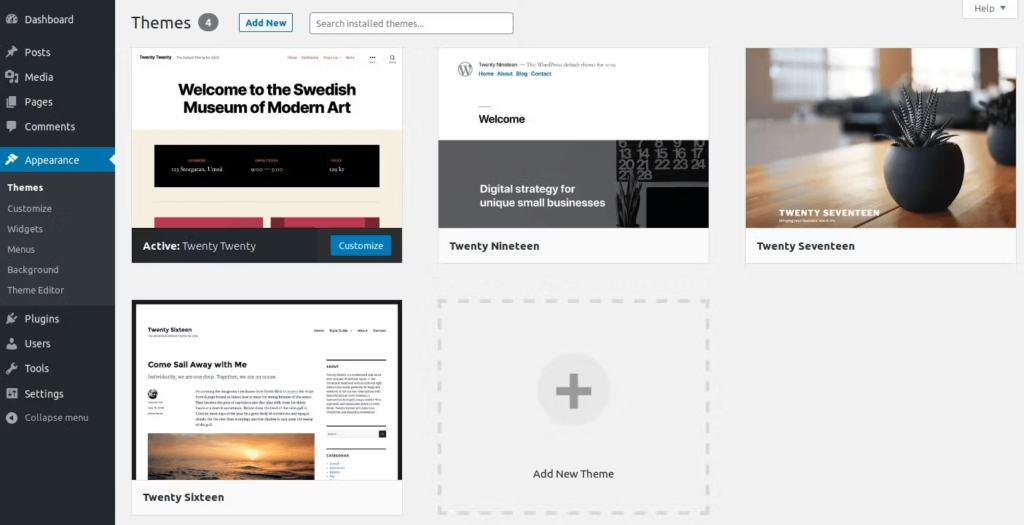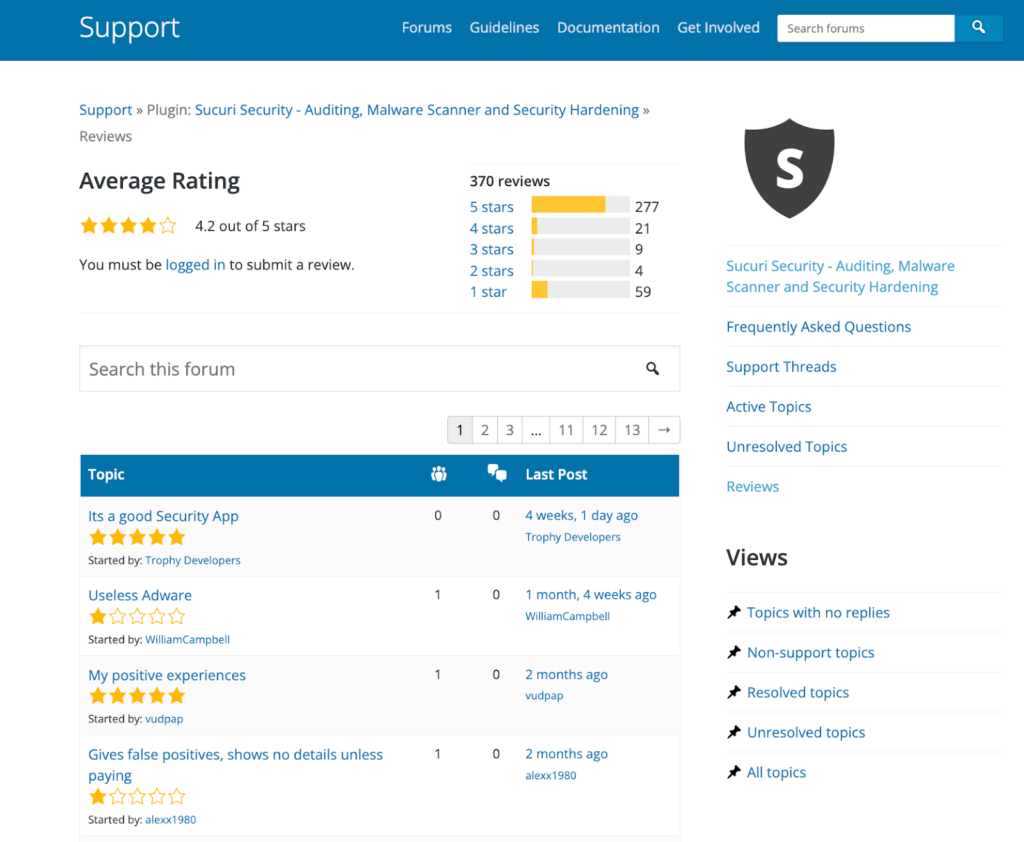Want to just get started? Click here to sign up for Bluehost and Zyro today.
Customers expect businesses to have a functioning company website so that they can learn more about their products and services.
Many business leaders assume they’ll need web building knowledge—or hire a professional web designer to make one. They don’t.
Instead, they can use web builders to create and launch your company website within minutes.
The Top-Rated Web Builders to Build a Company Website
Web builders have truly transformed web development. But which ones are worth your money?
- Zyro – Best for keeping website costs low
- Wix – Best website builder for your first website
- Shopify – Best for building ecommerce websites
- Bluehost – Best for WordPress websites
- Squarespace – Best website builder for creators of all stripes
- Weebly – Best for solopreneurs
- GoDaddy – Best for building your website from your phone
You can read our full reviews for each website builder here.
5 Steps To Building a Company Website
Here are the five steps to building a company website:
- Get a Domain Name and Business Email
- Finalize Your Business Website Builder
- Get Started on Your Company Website
- Add More Optimized Website Content
- Get Your Website Out to the World
The Easy Parts of Building a Company Website
Building a website for your company used to be a difficult, tedious, and time-consuming process. Not anymore.
Today, we have web builders that automate most of the hard work. They let you build the website of your dream in just a few clicks, so you can get started on building an online presence right away.
Despite this, web builders are still extremely affordable, so you don’t have to worry about breaking the bank anytime soon.
You also have hundreds of thousands of templates and plugins available at your fingertips that can not only make your company website look on-brand and attractive but also ensure it performs well and is fast.
The Difficult Parts of Building a Company Website
There are also a few hurdles you need to overcome when building a professional website.
Going overboard on your budget is one factor to keep in mind. Most website builders allow you to build your website either for free or at dirt cheap rates…until you get your domain and email address and add any basic-level functionality to it. In fact, a few solutions even charge you for speaking to customer support.
Finalizing a domain name is no easy task either. Considering there are over 1 billion websites in the world, there is no surety the domain name you like is available. You may have to spend hours brainstorming good domain names for your company website, which isn’t exactly an exciting prospect.
You need to be careful when choosing templates, too. While you’ll find many customizable options, there will be limitations to how much design can be changed. This may be frustrating for those who have a very specific vision for their site.
Step 1: Get a Domain Name and Business Email
The very first step of building a company website is selecting a web domain name and getting a professional email address.
This helps visitors look your company up among the endless websites. Likewise, having a professional-looking email address adds to your business’s credibility.
Pick and Buy a Domain Name
No one else can have your domain. For instance, quicksprout.com is my website’s domain—and unless I don’t renew my subscription, no other brand can use it. Being the first thing customers see, domain names are also critical for making a solid first impression.
With so many things riding on your domain, you obviously don’t want to get this wrong.
- Align your domain name with your business
- Keep it short, easy to spell, and remember
- Include keywords relevant to your business
- Skip abbreviations or unnecessary hyphens
- Use top-level domain names, such as .com or .org
You’ll have to pay an initial cost of registering a domain that typically comes to $10-$12 per year, which gets renewed annually to keep it registered going forward. This helps secure your domain name and ensures nobody else can take it.
But don’t take your money out just yet—you can register your domain name for free when using a web builder. More on that in Step 2.
Create a Professional Company Email Address
Get a custom business email, preferably with G Suite. You have to pay a small subscription fee (starting at $6 per month), but Gmail’s top-notch security and reliability, along with the fact that professional emails make your business look more professional and established, makes it well worth it.
Step 2: Finalize Your Business Website Builder
Selecting the right business website builder is one of the most important steps of building your company website—one that takes deep research and dedication. But don’t worry, we’ll guide you through the process to simplify it for you.
Identify Which Web Builder Best Meets Your Requirements
The good news is you have a lot of options when it comes to web builders. The bad news is you have a lot of options that come to web builders.
Many of them can help you get your website online, but each one has different features, pricing, and level of customer support. Which one should you choose? Let’s find out.
Identify Important Features
Every business is different. Some have a huge budget, while others prioritize money-saving. Some have tech-savvy teams, others may have team members who are beginners in tech.
Identify your organization’s unique requirements when selecting a website builder. As someone who has built several (high-performing) business websites, I choose platforms based on three factors:
- User-friendliness
- Customization
- Monetization
You can always adjust the list based on what you think would be more appropriate for your business.
Sign Up With the Website Builder
Based on my requirements, Bluehost is usually my top pick.
This is because I mostly work with WordPress websites, and since the platform comes recommended by WordPress.org, choosing Bluehost is really a no-brainer. Plus the fact that it’s affordable, user-friendly, and offers 24/7 customer service support and built-in security features doesn’t hurt.

Circling back to the domain name, Bluehost also offers users a free domain for the first year of your plan. As we said, you don’t need to worry about the money just yet.
If Bluehost sounds like the right fit, sign up here. The Basic plan starts at just $2.75 per month and is suitable for small websites. In case you have larger needs, you can always upgrade to Bluehost‘s premium plans.
Besides Bluehost, you can also try the highly affordable Zyro and the super user-friendly Wix. Both of them come with powerful features and customizations, and require no previous site-building experience or knowledge.
Install the WordPress Software (Optional)
Whether or not you need to install WordPress depends on your choice of website builder. For instance, if you use an all-in-one website builder (think Squarespace), you can skip this step. But if you want to use WordPress (like I do) and a hosting company, your next task is installing the content management system (CMS).
Thanks to its intuitive dashboard and one-click WordPress installation feature, installing WordPress when you use Bluehost is super quick and easy.
Here’s how you can download WordPress through Bluehost:
- Open your Bluehost dashboard.
- On the left-hand of the menu, select My Sites followed by Add Site and Create New Site.
- You should see the option to install WordPress or start working with Bluehost’s website builder. Select the Get Started option inside the WordPress box.
- Follow the displayed prompts, where you enter your website name and tagline. Click Next.
- Enter your email address and create a password for your new WordPress site. The installer will automatically start downloading and installing WordPress.
- Next, go to My Sites and select Manage Site. Click Login to WordPress.
Of course, WordPress installation will be different depending on your chosen web hosting provider. But you can always contact customer support for more help.
Step 3: Get Started on Your Company Website
Finally, we arrive at the fun part!
This is where you can make the more fun decisions concerning how your website looks and works. Here, I’ll go into more detail about selecting the right templates, plugins, and extensions for your company site.
Choose a Theme or Template
WordPress, along with other web builders like Squarespace, offers tons of optimized and attractive templates or themes you can easily customize for a more on-brand look. Moreover, most of them don’t cost a single penny either!
The following are the steps to access free template options on your WordPress dashboard:
- From your WordPress dashboard, navigate to Appearance followed by Themes.

- You’ll see a vast selection of free themes appear on your screen. Install and Activate the one you like the most. You can customize it later to suit your requirements. Alternatively, consider using premium WordPress business themes that include pre-built portfolios, page builder integration, and ecommerce pages if you have extra money to spend.
If you use Squarespace, for instance, you won’t have to leave the platform to activate themes. This is because the web builder lists all templates directly on its website, plus you can see each one of them at the click of a button.
Install Plugins and Extensions
If you want to make the most out of your company website, installing plugins (in WordPress) and extensions (in other web page builders) is a no-brainer.
You may feel tempted to install as many plugins and extensions as you can, especially when you have thousands of options available. But you should *only* pick the ones you genuinely need to avoid low page speeds and inadequate site performance.
The following are the common areas where installing plugins or extensions makes sense:
- Website performance and optimization to build a fast-loading website
- Security to protect your website against cybercriminals and other malicious actors
- Database and file backups to protect your data in case anything goes wrong with your website
- Search engine optimization (SEO) to help your business gain more visibility in the SERPs
- Ecommerce to help your online business easily handle sales
When choosing plugins or extensions, look for tools with high ratings and regular updates. You can also read feedback from previous users to determine whether installing the plugin is worth your time.

Step 4: Add Optimized Website Content
You have a functioning website! Your next step is to add content that tells visitors more about your business and what they can expect from you.
Create the Necessary Web Pages
You don’t have to add a lot of content immediately, but it’s nice to have a rough structure in mind so you know how to proceed:
- Homepage. Your homepage is the first thing visitors see when they visit. Ideally, you want it to be a short overview of your services, plus include clear navigation that takes them to other sections of your website.
- Products. As the name suggests, this showcases your work and describes what you can do for your visitors. You can also name it as Services or Portfolio page if needed.
- About. This is where you’ll share an engaging back story about your company and team members.
- Contact. Include a contact form and impactful copy on your Contact page so that visitors feel encouraged to get in touch.
- Blog. Having a well-maintained blog is an excellent content marketing tool to get more leads. While you don’t need a densely populated blog page right away (obviously), you can add a few introductory posts if you want.
Optimize Your Company Website for Search Engines
After making the web pages, you need to ensure people can find them—and optimizing your content for SEO is one of the most reliable ways to achieve this.
SEO is all about refining your content so that it ranks higher on the SERPs. The following are a few key practices to remember:
- Include appropriate keywords in your web pages and blog posts
- Optimize website speed
- Add internal and external links throughout your website
- Choose a responsive design so that your content works on all devices
- Use post names in their permalinks
In WordPress, you can install SEO plugins like Yoast SEO that automatically scan your content and suggest content optimization tips.

Step 5: Get Your Website Out in the World
The moment has come when you finally hit Publish. But there are a few last things you shouldn’t ignore to ensure a successful launch that gives you a solid start.
Test Your Company Website
Show your website to a trusted confidant to get their honest opinion. Ask them to navigate your website to learn how someone may move around your website and where they may get stuck.
If your confidant gives you the go-ahead, congratulations! You’re set. But if they suggest a few improvements, take it in your stride. Start working on implementing the changes.
Don’t Stop After Hitting Publish
After making your website live, focus on spreading the word. Send an email to contacts or post on social media announcing your website’s launch. Regular site maintenance is also important to consistently deliver a good user experience.
